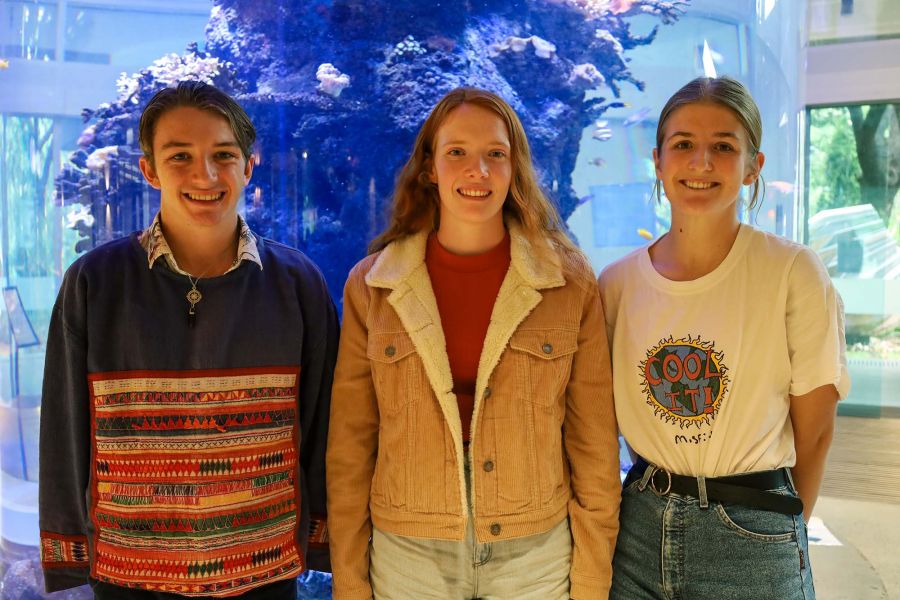A day in the life of a Seagrass Scientist
Dr Tim Smith, a Senior Research Officer with TropWater at James Cook University, shares his experience of monitoring and mapping seagrasses at our Port of Weipa.
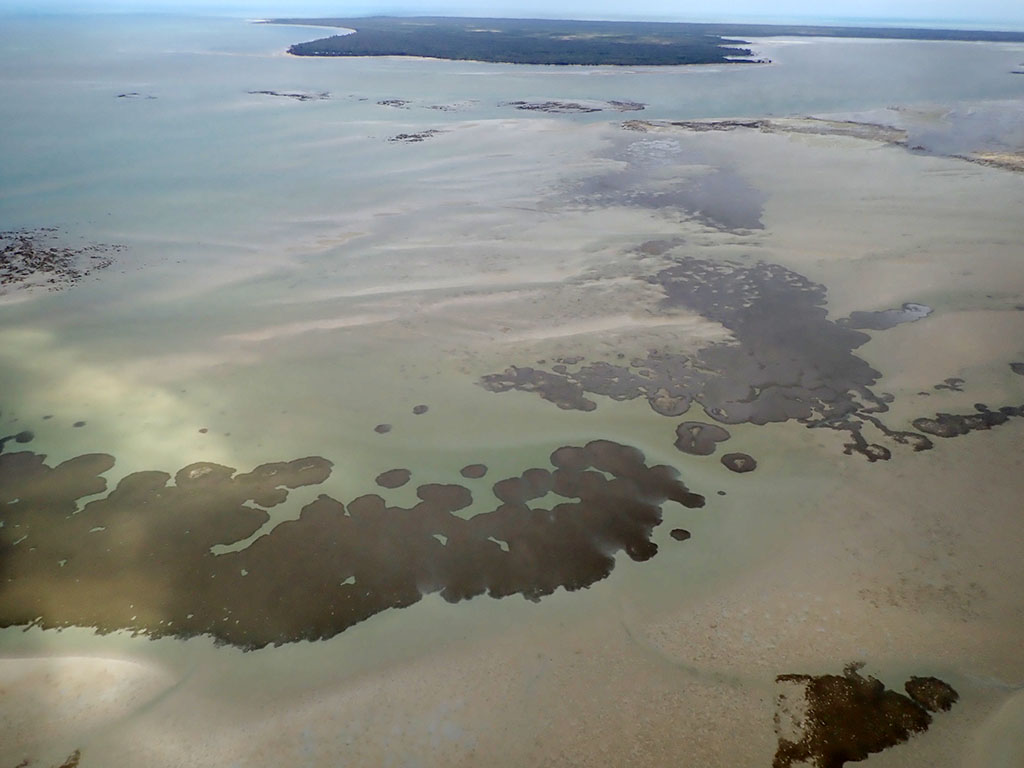
Weipa is one of the best places to do field work for a seagrass scientist. The lush seagrasses are really diverse, with five different species, and the meadows are some of the biggest I’ve ever seen!

An added bonus of working in Weipa is the amazing wildlife and scenery that we get to see while we are working. The seagrass meadows in Weipa can be very remote, so we monitor them by helicopter at low tide.
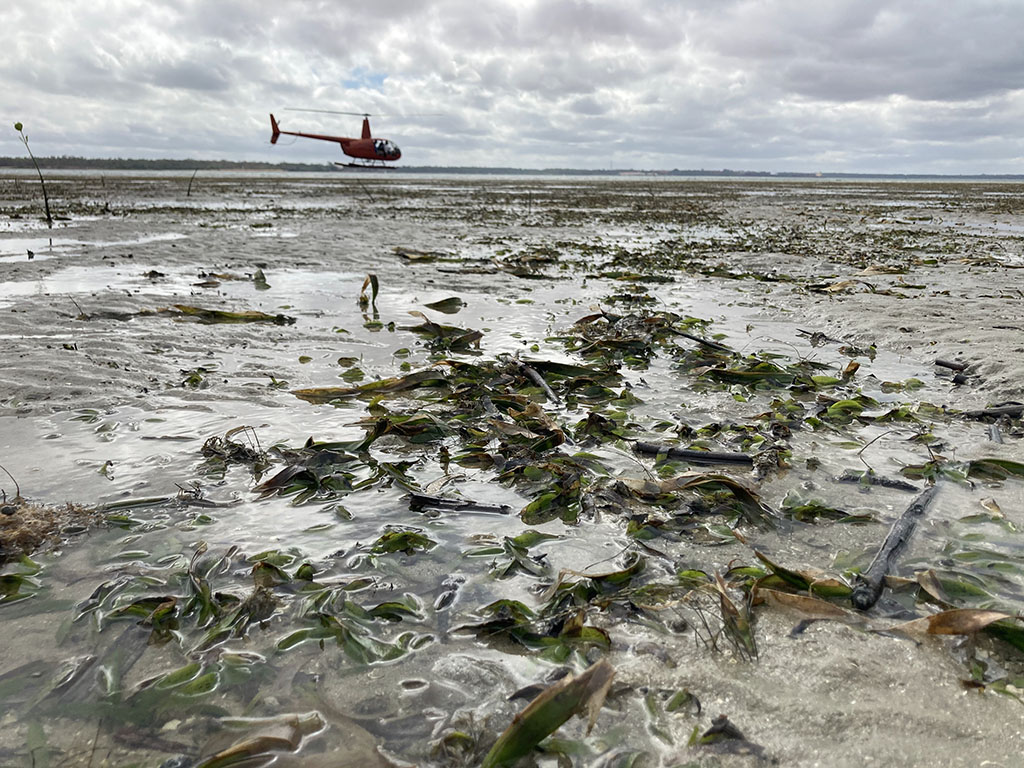
Using a helicopter means we can quickly cover these extensive meadows and assess large areas of seagrass that we would otherwise not have access to, and it is great fun!
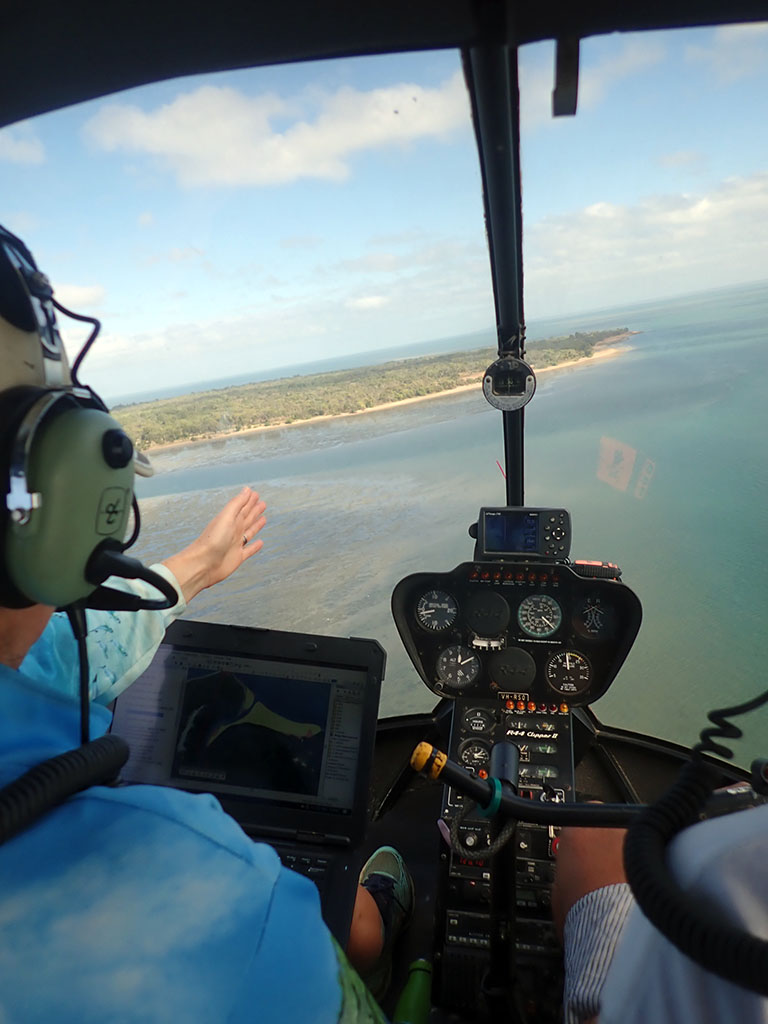
We get up early, check the weather, grab a coffee and pack the laptop, equipment and snacks for take off two hours before low tide when the seagrass meadows are becoming exposed.
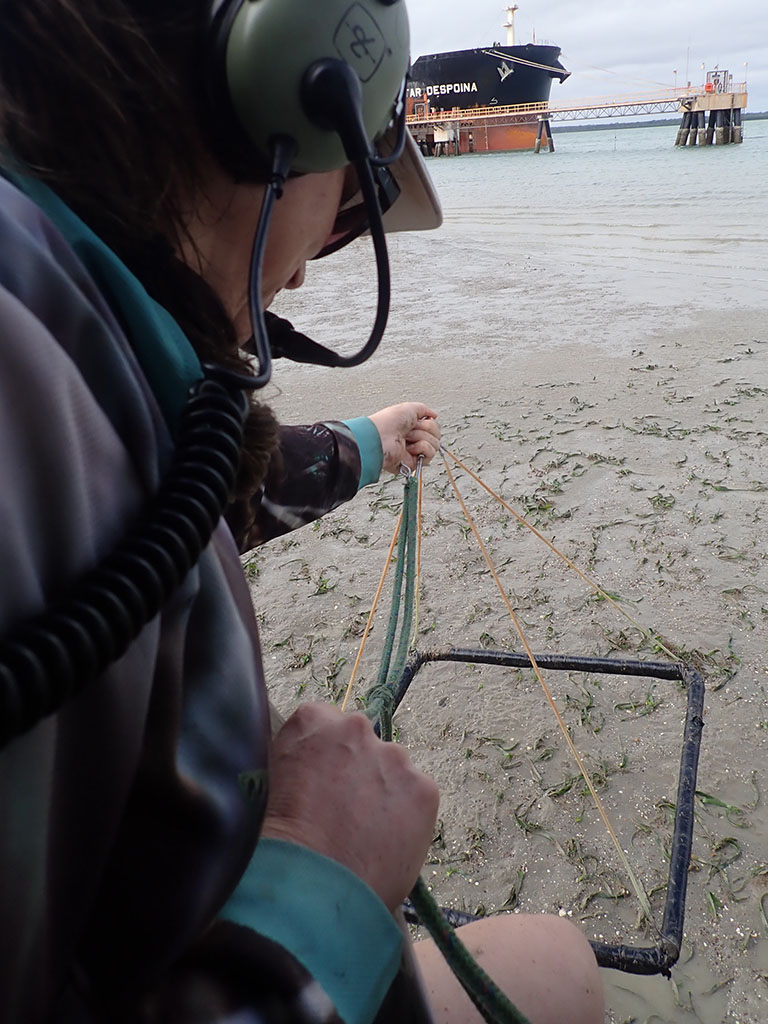
The seagrass meadow boundary is usually pretty clear from the helicopter, and we map each meadow by logging GPS points as we fly around the edge of the meadows.

Then we estimate the amount of seagrass and the species composition throughout the meadows to check the seagrass condition. This involves hovering low over the seagrass to deploy a quadrat (a small square to focus our measurements) and identify the species and how much seagrass is at each site. We usually do 30-60 sites in each meadow.
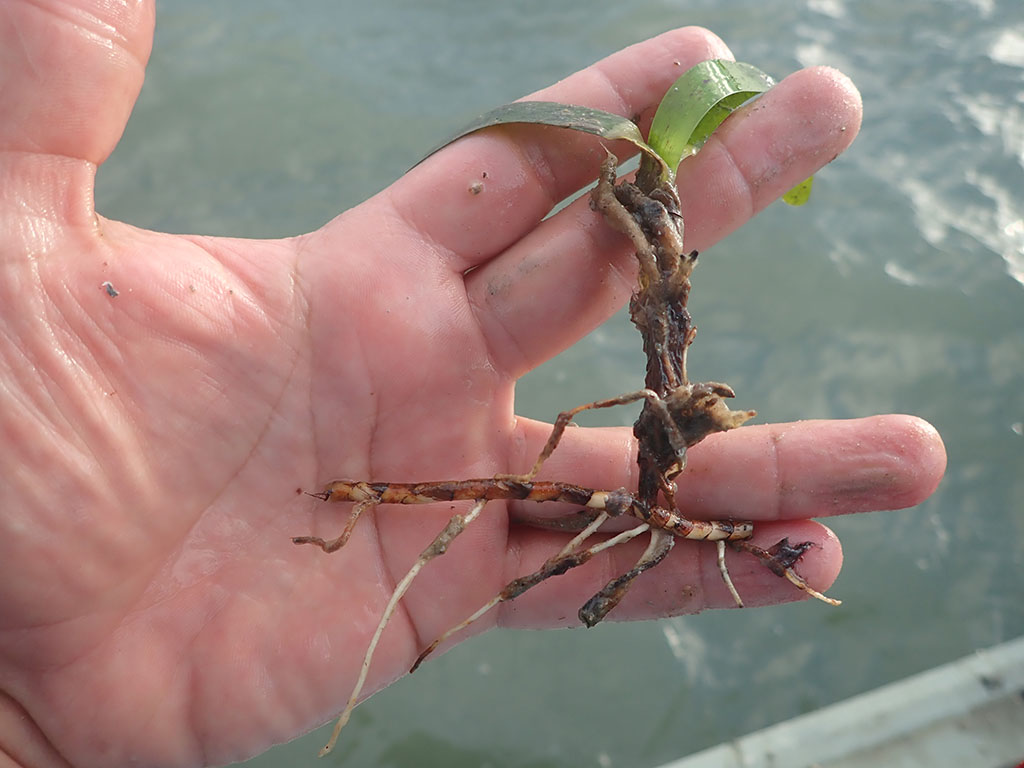
We can work for a couple of hours after low tide before the water begins to cover the bank again, and we can’t see the seagrass from the helicopter. Assessing the seagrass biomass in Weipa can be challenging because the seagrass ranges from very large species Enhalus acoroides which is long and strap-like, to the very small Halophila ovalis which can be smaller than a 5 cent piece. But flying around in the helicopter is great fun, and we see lots of Crocs, Jabirus, Turtles and Barramundi when the water is clear enough.

This year we saw a lot of seagrass flowers releasing pollen which I haven’t seen before. Seagrasses are like land plants in that they produce flowers and seeds. Most of these flowers are very small and are pollinated underwater, but the largest species, Enhalus acoroides, produces large flowers which float to the surface to release their pollen. The pollen looks like small Styrofoam balls floating on the surface.

Once we have landed the helicopter, we have a quick break and grab some lunch back at the accommodation before taking the boat out to assess the seagrass in the deeper water (which isn’t exposed at low tide) and change water quality and light data loggers.
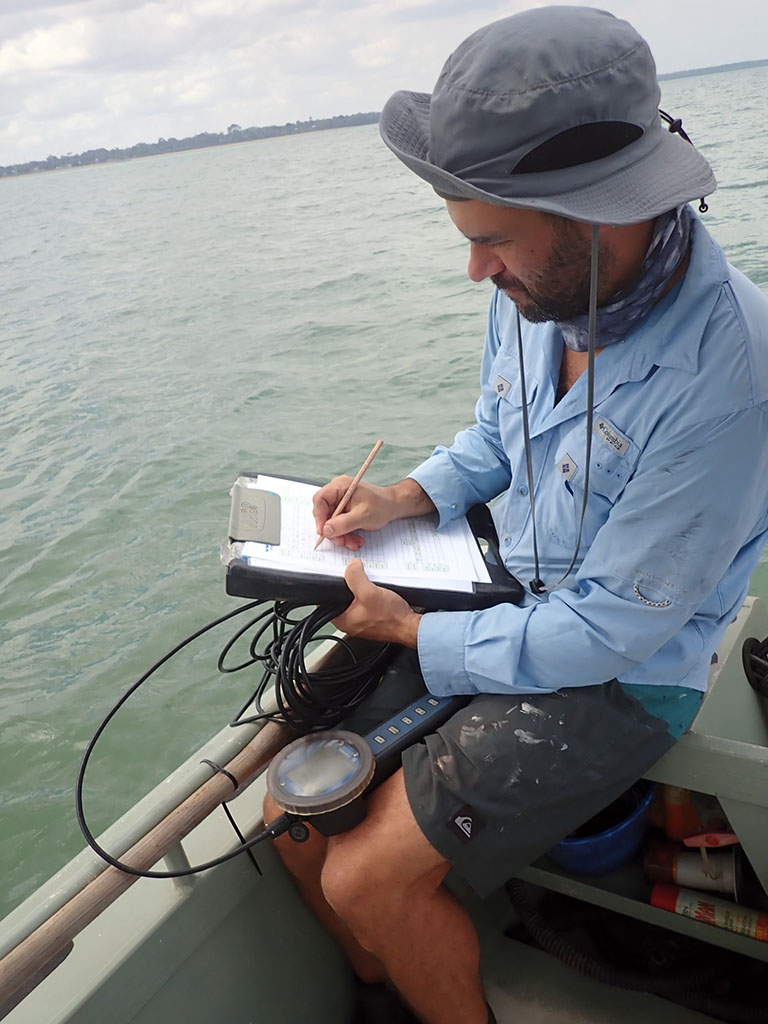
To assess this deeper seagrass, we put a specially designed underwater camera system with a live feed over the side of the boat and estimate the amount of seagrass and species composition. After an hour, the water is deep enough to drive onto the bank and collect data from our permanent light loggers. This year we also collected the below-ground parts of the seagrass plants to determine energy stores before and after the wet season.
Once we have finished for the day, we give the boat a clean and head back to the accommodation to back up all our data. It’s been a big day, and we head to Barramunchies to watch the sunset, have a cold beverage and relax for a few hours.

